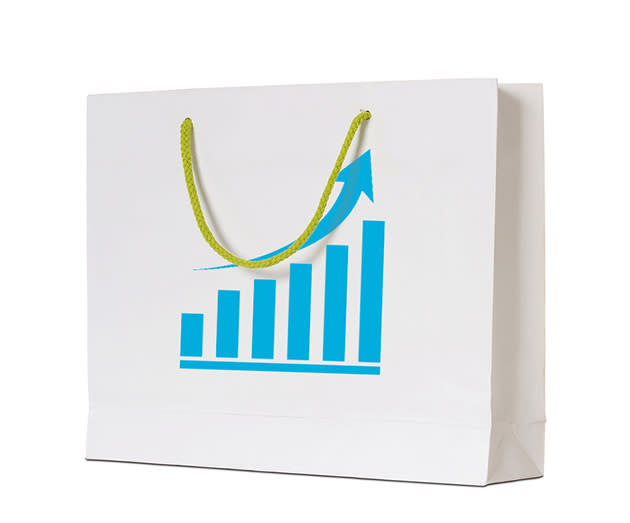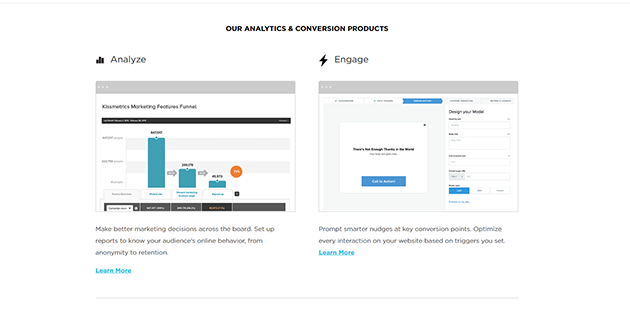The Most Important Ecommerce Trends To Follow Into 2017

Ecommerce has a bright, shiny future. As of the present, the average consumer spends at least $1,800 per year on the internet, a number that's only going to increase as time progresses.
A prediction by Internet Retailer claims that online spending in the U.S. will generate $355 billion in 2016 (eMarketer predicts $392.5 billion), a number that's expected to exceed $400 billion per year by 2018.
Along the way, there will certainly be some trends that set new benchmarks and that create a new baseline for ecommerce as a whole. Feeding this industry are software solutions that have paved the way for a more enriched customer experience and a more robust backend for retailers.
So what's the latter half of 2016 have in store, and what will be a game-changer in 2017?
Real-Time, Signal-Driven Analytics
Amongst the most pertinent of 2016 ecommerce trends to look out for are real-time, signal-driven analytics. These newer analytics replace the older ones from yesteryear and provide deeper insight, breadth, depth and scope than ever thought possible before.
Leading the revolution here is a name that many online retailers already know (as the company has been around for quite some time): kissmetrics. This software enables the ability to assign tracking signals to every sales channel and possible conversion source, and follow it from its source to either a conversion, an abandonment or a bounce.

With real-time analytics such as this that are signal-driven, retailers now have the power to analyze every possible conversion point. Software such as this – and related solutions like Mixpanel and Hubspot – put e-tailers in the know about every interaction. They are then able to use this information to better understand the behavior of an audience, and also to know what small changes they can make to drive healthier conversions across the board.
Live-Action Customer Engagement Will Dominate
Another plausible trendsetter for ecommerce in 2016, and well beyond, is live-action customer engagement. According to Gallup, there are three types of customers: actively disengaged, indifferent and fully engaged.
According to recent polls/studies that this think tank has conducted, fully engaged shoppers drive 44% more visits per year to online retailers and spend an average of "$373 per shopping trip." As compared to disengaged customers, who spend a lesser "$289 per trip."
According to a Small Business Trends report, there are several methods that retailers can use to actively engage customers.
These include:
Quoting them in your blog to help drive repeat customer visits and encourage interaction.
Answering their questions via a video or a written post.
Sending them important updates via email or newsletter.
Posting valuable content with frequency to help keep customers up-to-date.
Sharing valuable links and content throughout social networks.
Creating an interactive ecommerce design.
Advertising special offers to the most loyal customers first.
Retailers are now adding to this fervor by incorporating live customer service software like zendesk. This solution actively engages customers and allows them to ask questions via an online chat system, social media, phone, message and more. Tickets are created that the customer support team can respond to in real-time. What's more, retailers also have the ability to offer live-chat support to any customer during the shopping process. Comparative services include: Groove and Desk.com.

According to an Econsultancy report, 83% of customers want live support during the shopping and checkout process at an online store. In instances of customers being inept with online shopping or new to the experience, this number increases to 90%.
The report further reveals that:
51% of shoppers will try one time or just give up if they do not have support during the shopping experience.
76% will try at least one time post-shopping to get the support they need before giving up.
Mobile Engagement Will Reach New Heights
More shoppers are using their smartphone handsets and tablets to shop online. But mobile engagement has been lackluster in catching up to consumer demand. That is, until now. According to think tank Gartner, mobile engagement and the mobile behavior of shoppers will skyrocket ecommerce-driven mobile revenue by at least 50% by the year 2017.
Gartner is also predicting that over "$2 billion in online shopping will be performed exclusively by mobile digital assistants." This includes expediting checkouts by automatically filling in the name and address for the shopper, and even furnishing the credit card information to facilitate a purchase.

Mobile engagement will reach beyond the ecommerce store, however. Forrester says that "Mobile will act as a catalyst to transform businesses in the Age of the Customer." Their report says that the average consumer reaches for their smartphone 150-200 times daily, and that just 14% of companies are cashing in on using mobile as an engagement platform.
According to AppLift, mobile wallets will take center stage during this transition. This will empower chain stores like Starbucks to improve the payment and checkout options for their customers. And Pymnts.com explains that 20% of in-store sales at Starbucks already are processed via mobile device.
Virtual Sales Forces Will Become The Status Quo
A big prediction for ecommerce trends in 2016 is the sales force (not to be confused with the software). As retailers begin to understand that shoppers like the in-person experience of stores but want the convenience of online shopping, more brands will begin to staff their stores accordingly to accommodate this growing demographic of consumers.
In addition to offering interactive support like zendesk features, shoppers will be able to communicate directly to live sales assistants and have their questions, concerns and comments conveyed and answered in real-time.
An Entrepreneur article reflects this very notion, citing the need of "personal shoppers for all" with the online shopping experience. Aside from personal shopper apps helping customers enjoy an improved in-store experience, these same apps will crossover to ecommerce, and will serve to enhance the online shopping experience, too.
A Prime-Like Shopping Experience Will Become Standard
Online shopping is not without its pitfalls. One of them is the inability to see or touch items before making a purchase. Also, the inability to try on things like apparel can result in a high rate of returns, something that can reach as much as 33%, according to the Wall Street Journal.
The most prominent ecommerce trend to look for in 2016 is an automated return processing system that delivers an Amazon Prime-like shopping experience for all.
In a recent Forrester study that was conducted on behalf of UPS, it was found that 81% of customers want an easier way to return products they buy online.
According to the comScore, 68% of online shoppers desire complimentary return shipping and a simplified return process to feel confident completing a purchase.
Newer, integrated software solutions like ReadyReturns put retailers in a position to offer their customers an automated online product returns system. This software integrates directly into the online store and provides a user-friendly return portal for customers and for retailers.

With solutions like this, a shopper needs only return to the same site they made the purchase at, and they can quickly process a return and generate a prepaid shipping label. Retailers can set customized rules for returns and to control return shipping costs. In addition, the software is also capable of communicating return inventory directly to any warehouses, and can provide detailed analytics to retailers.
Retailers like Zappos have set the standard – a trend that will continue well beyond this year – by offering free returns to one and all with a customer-friendly no-questions-asked policy.
According to a FastCompany publication, Zappos sees an average 35% return rate that can peak at 50% for their most valuable customers. Still, the company sticks by its 365-days, no-questions-asked return policy with included return shipping at no extra charge.
Social Selling Will Take Center Stage
Social commerce is on its way up, too, and the sky is the limit in 2016 and beyond. Services like Soldsie, for example, allow retailers to gain valuable, high-conversion referrals from social networks like Instagram, helping them improve click-through rates and ROI. The service also powers comment selling and Facebook, amongst others.
Another trendy social commerce service that will be in more use this year, and moving forwards, is Curalate, a direct competitor to Soldsie. It allows users to turn fan photos (Instagram) into clicks that generate higher conversions, as users comment and add likes to images, generating usable social collages that can be shared to improve conversions.

A classic example of a social commerce trend such as this in motion is the Like2Buy Nordstrom Instagram store (pictured above). It effortlessly celebrates the timeless quality of this designer department store, incorporating the imagery that Instagram users love, while facilitating brand ambassadorship and social referrals in the process.
Same-Day Delivery Will Set A New Standard
Last on our list is the desirable same-day delivery option, a fad that began with Amazon Prime and that's now crossing over to the many other selling channels.
A Forrester report sheds some light on this growing consumer demand, showing us that 29% of consumers would be interested in – and would be willing to pay more – for same-day delivery of goods in 2016 and beyond.

Startups like Postmates are cashing in on the same-day delivery craze, offering same-day delivery service in select cities nationwide. This spans the gambit ranging from everything to local goods and food all the way to store deliveries and ecommerce orders that are placed online.
A Chicago Tribune write-up explains that Postmates is looking to expand beyond its original moniker – delivering food to local patrons – into a logistical solution that enables e-tailers to offer the highly desirable Amazon Prime same-day delivery method to customers nationwide.
Other, related services like Instacart – which began as a grocery delivery service – are teaming up with retailing giants like Target to enable it to offer competing same-day delivery services to consumers, too.
As you can see, 2016 has already been a healthy year for ecommerce. As we head into the second half of the year, many of these trends are already being cemented as the new standard moving forwards.
Indeed, 2017 will bring much innovation and leave us wondering what's in store next.
